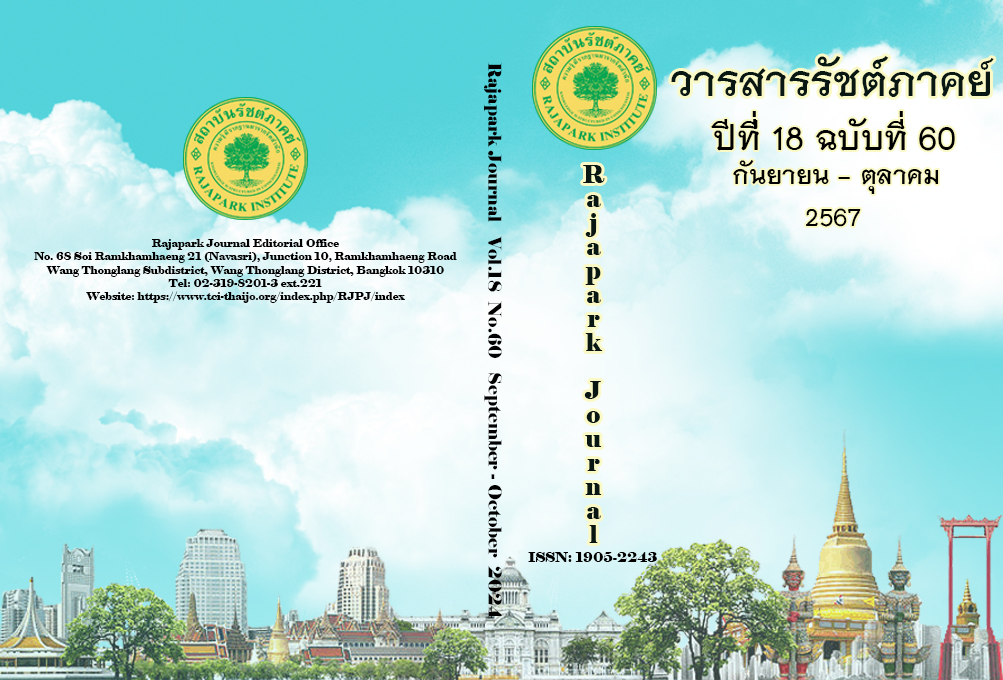Social Opportunities and Income Sources Diversification Developing Models for Deprived Farmers Cultivating Cassava Through Agri-Business Value Chain Management: A Case Study of Cassava Production Using Appropriate Technology in Kalasin Province
Main Article Content
Abstract
The purpose of this research is to develop social opportunity models and explore the income diversification sources of the deprived farmers cultivating cassava through agri-business value chain management: A case study of cassava production using appropriate technology in Kalasin Province. This research employs both quantitative and qualitative methodologies. The sample includes deprived farmers from Nong Kung Si, Sahatsakhan, Na Mon, Don Chan, Kamalasai, and Kuchinarai Districts. These farmers were selected using the TPMAP and Kalasin Happiness Model (KHMV2), encompassing 550 occupations related to cassava. Data collection instruments included a revenue-based survey, an assessment of technology adoption and deployment, and an analysis of innovator levels. Data were analyzed using descriptive statistics and content analysis. The research yielded the following results: 1) The social opportunity lies in empowering farmers to engage in agricultural learning, enabling them to become innovators who can apply their knowledge to develop others and expand networks. 2) In the cassava farming chain (Mun Kum-Kha), 550 deprived farmers experienced an average income increase of 481,625 THB, or 137.71 percent, following the research project. This income growth was driven by the use of appropriate technologies such as charcoal kilns and presses, which allowed farmers to collect and process remaining oil rhizomes from their plots into biomass charcoal for sale. Additionally, the production of wood smoke vinegar helped reduce pest control costs in general agricultural plots. Cassava scraps were chopped, dried, and sold, while cassava waste was processed into animal feed, ultimately evolving into a learning network capable of entering the market.
Article Details

This work is licensed under a Creative Commons Attribution-NonCommercial-NoDerivatives 4.0 International License.
Views and opinions appearing in the Journal it is the responsibility of the author of the article, and does not constitute the view and responsibility of the editorial team.
References
Auttajate, K. (2022). Reductions in income inequality among agricultural households in Thailand: A post COVID-19 pandemic future. Armed Forces Development Command Journal, 46(1), 47-58. https://so01.tci-thaijo.org/index.php/AFDCJournal/article/view/255065
Bureau of Agricultural Economics Research, Office of Agricultural Economics, Ministry of Agriculture and Cooperatives. (2023, July). Access to agricultural technology, innovation, and funding. https://api-research.nabc.go.th/uploads/3637a4063b_725d53b85c8b28c172cdacf8e6b1741e.pdf
Department of Agricultural Extension. (2019). Young Smart Farmers (YSF). https://esc.doae.go.th
Davis, F. (1989). Perceived usefulness, perceived ease of use, and user acceptance of information technology. MIS Quarterly, 319-339.
Fishbein, M., & Ajzen, I. (1975). Belief, attitude, intention and behaviour: An introduction to theory and research. Addison-Wesley. https://people.umass.edu/aizen/f&a1975.html
Kingnet, N., & Manijak, N. (2019). Thailand’s occupational dimension inequality: A case study in agricultural occupations. Bank of Thailand. https://www.bot.or.th/content/dam/bot/documents/th /research-and-publications/research/discussion-paper-and-policy-paper/Inequality_4GiniCoefficient.PDF
Na Ranong, S. et al. (2024). Evaluation for appropriate technology program: Tools and methods, EAT (2nd ed.). IQue Madia.
Porter, M.E. (1985). The competitive advantage: Creating and sustaining superior performance. Free Press.
Rogers, E.M. (2003). Diffusion of innovations (5th ed.). Free Press.
Rogers, E.M., & Shoemaker, F.F. (1971). Communication of innovations. Free Press.
Schumacher, E.F. (1975). Small is Beautiful: Economics as if people mattered. Harper & Row.
Songrak, A. et al. (2022). Application and expansion of appropriate technology for improving capability and social opportunities for poor people within strategic research areas. Rajamangala University of Technology Srivichai, Thailand.


